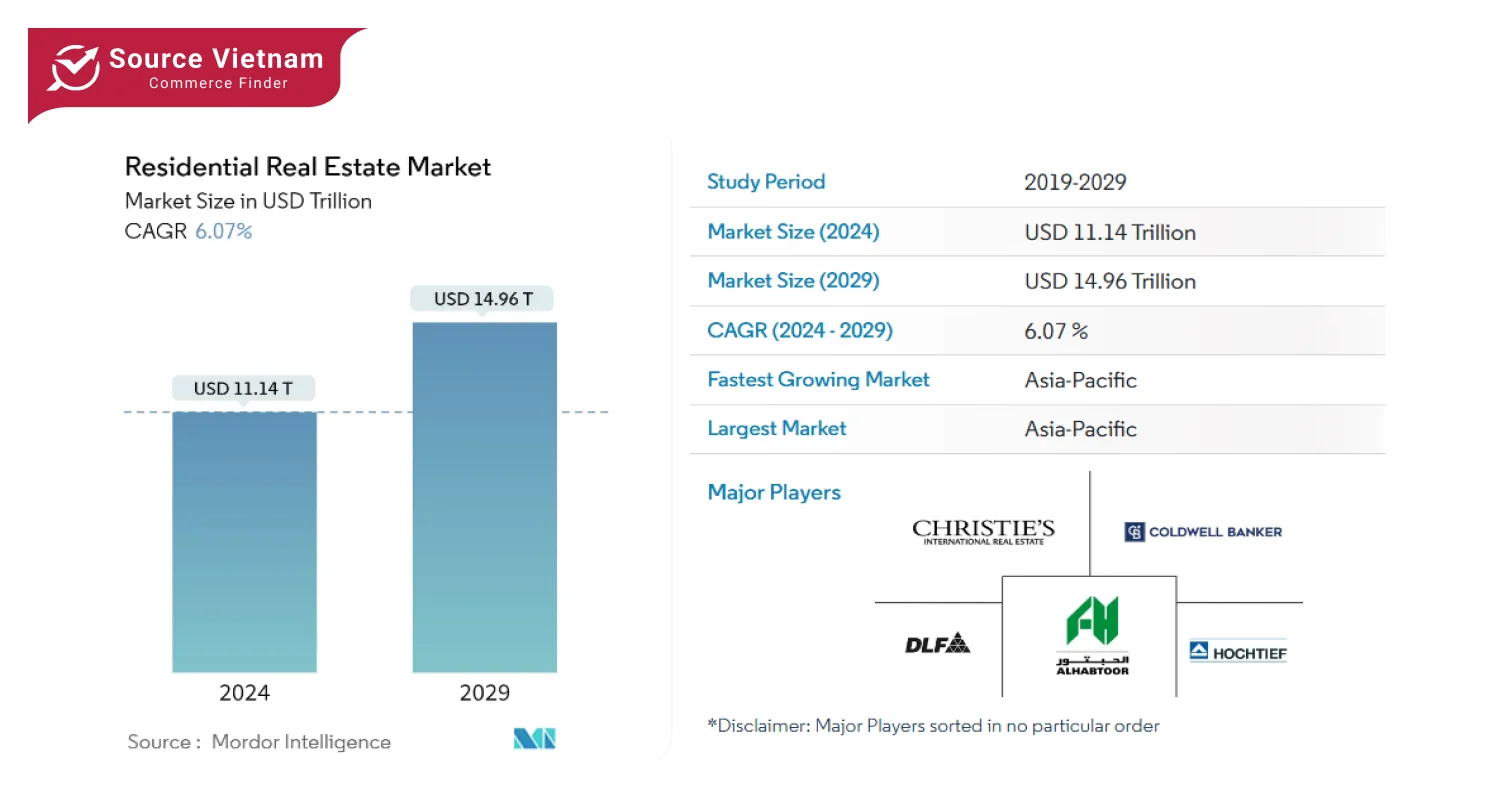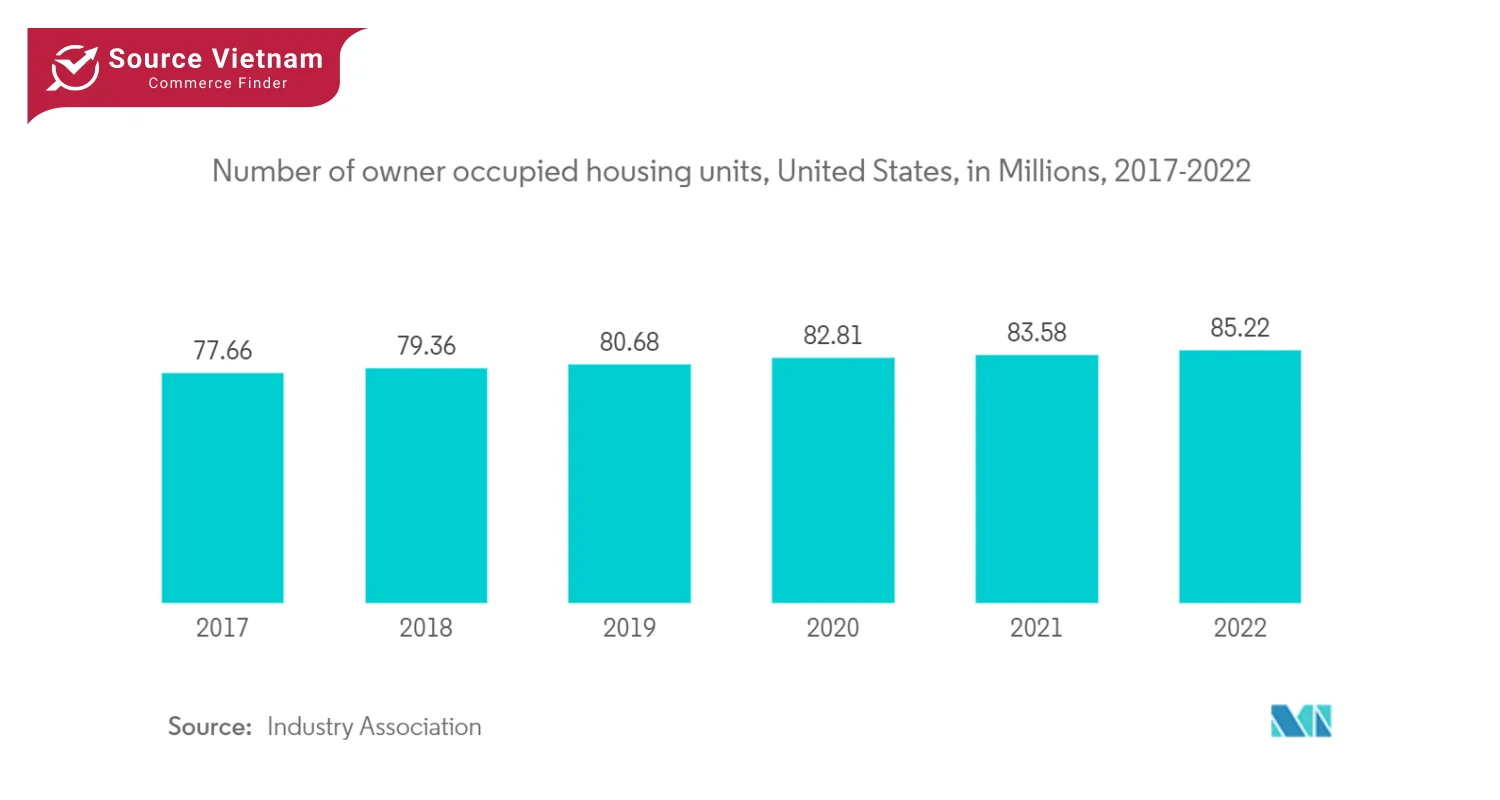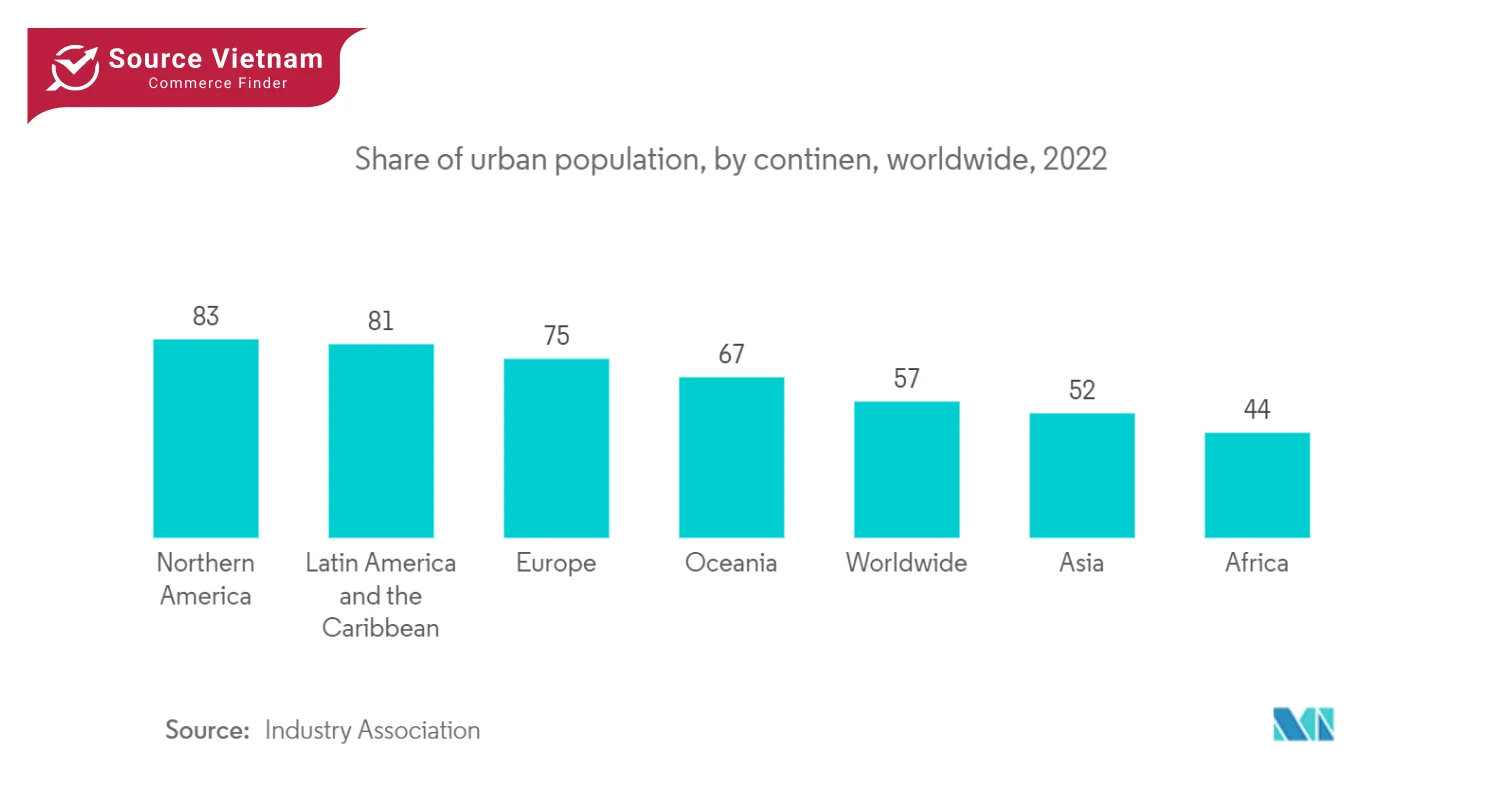Insight:
- As of 2024, the residential real estate market, which stands at 11.14 trillion dollars, is expected to rise to approximately 14.96 trillion dollars by 2029, at a CAGR of 6.07%.
- Major factors: Urbanization & low mortgage rates have raised homeownership and residential development in some areas (USA, Asia and the GCC).

The global residential real estate market is expected to experience significant growth over the next few years. Valued at an estimated USD 11.14 trillion in 2024, the market is projected to reach USD 14.96 trillion by 2029, growing at a CAGR of 6.07% during the forecast period.
Market overview and challenges
The real estate sector encountered challenges during the Q3 of 2022 due to economic uncertainties. A significant portion of the major economies is preparing for scenarios of possible recession. Nevertheless, certain commodities exporters perform better than others, thus presenting a somewhat heterogeneous economic outlook.
Besides, the central banks acted to control inflation by raising rates, which affected the market sentiment and slowed down transaction activity. As a result, this change has led to tempered decision-making by property buyers and investors.

Over the years, the cost of homes for sale in the United States has increased. Newly listed homes have appreciated 26.5% since March 2020, a 13.5% growth from the last year.
The increase was also observed in areas like New York City, Chicago, and Dallas/Fort Worth at 9.1%. In March 2022, a median price of USD 405,000 was recorded for active listings, which is 8% more than last year. The country’s active listings inventory, the number of homes, has also dropped 18.9%, which demonstrates a perfect seller’s market where the demand is greater than the supply, which results in higher prices for houses.
Government initiatives and market growth

Countries like the United States, Canada and Australia have already taken steps to further develop the housing market. These efforts include first-time buyer stimulation, lowering transaction taxes, veteran support and affordable housing programs. An aggressive policy of low mortgage interest rates also contributed to growth. The same trend can be observed in the U.S., Canada, India and Australia as the home buying activity has surged because of lower rates.
Key market trends
Urbanization and homeownership among the elderly
In modern ANC, the majority of the world, 56%, however, moves to cities, giving numerous challenges such as housing, infrastructure and essential services for the lower class. It is expected that by 2050, 70% of the world’s population will reside in urban areas, owing to rapid urbanization.

In the U.S., homeownership among those aged 55-64 is 75.3% and 79.4% for those over 65. Younger adults under 35 have a lower rate at 38.3%. Gen X, born between 1965 and 1979, leads the market as the most active homebuyer group, followed closely by older millennials. Meanwhile, older generations are more likely to sell.
Tall structures and urban development
Cities worldwide are changing their silhouettes, placing new high-rise constructions as an answer to urban housing challenges. Such cities as Shanghai, Hong Kong, Dubai, Mumbai, and London are in the group of leaders presenting new skyscraper construction in the area. This increase in population is primarily directed towards Asia and the Gulf Cooperation Council (GCC) due to economic growth.
The impact of low mortgage rates
Lower mortgage rates play a crucial role in the market. Affordable borrowing leads to higher homeownership rates and stimulates property sales. Lower rates also encourage refinancing, enabling current homeowners to secure better terms or obtain additional funds for other expenses. This dynamic fuels the development sector, prompting builders to increase the supply of residential properties.
However, the effects of low mortgage rates vary by region. Factors such as local economic conditions, employment rates, and population growth influence how much the market benefits from these rates.
Competitive landscape
The residential real estate market is quite fragmented, with the presence of international players like Savills PLC and Sun Hung Kai Properties and local players such as DLF in India and KB Homes in the U.S. There are companies taking up various strategies, including mergers and collaborations to ensure their competitive status in the market. For instance, in 2021, Savills entered a partnership with SRS Real Estate Partners, while Lennar Group took over RealStar Homes to increase its presence in the USA.
Recent industry developments
- Dec 2023: The Ashwin Sheth group announced plans to expand its residential and commercial portfolio in the Mumbai Metropolitan Area (MMR).
- Nov 2023: Tata Sons’ Enterprise Tata Realty and Infrastructure unveiled its plans to roll out more than fifty projects across the length and breadth of the country, Sri Lanka and the Maldives to cover over 51 million square feet.
Conclusion
The residential real estate market is rapidly changing due to the increasing rate of urbanization, the policies in place for the government, and the periods in time when the mortgage interest stands still. Although there are still some economic risks, there are good prospects for growth, especially in the areas where the housing policy is well addressed and economic growth is also present.















